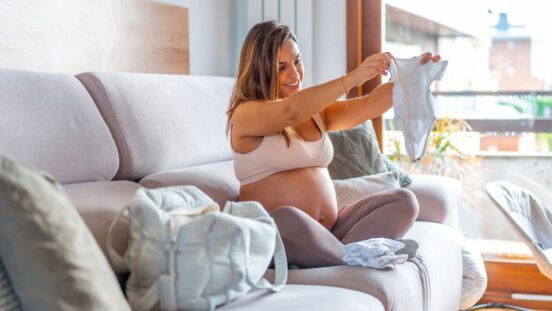Private vs. public hospital: the facts

Where you've choose to have your baby will impact on your labour and birth. Here we arm you with the statistics, and give tips on how you can take control.
Choosing where to have your baby can be a difficult decision. You may have picked your hospital based on where your friends or sisters gave birth, where your GP recommended or simply the one that is only a short 10-minute drive away.
And your decision to go with a private obstetrician or through the public hospital system may have been based on whether you have private health insurance, who you believe will give you and your baby the best care or if you’ll have a room all to yourself following the birth.
Although wherever you’ve chosen to deliver your baby will impact on the type of birth you’ll have, the best person to tell you how your birth is likely to progress is your chosen caregiver, like your midwife or doctor. Don’t be afraid to ask lots of questions: for example, find out what the caesarean rate is, or what pain relief options are available.
If you find it hard to get direct answers, then consider the following facts. Most don’t relate to specific hospitals or caregivers, but they give you an idea of what to expect from both the public hospital system and within private care. Can you buck the trend?
Susan Ross, midwife and author of Birth Right, says antenatal classes can provide the knowledge you need to achieve the birth you want, but recommends using an independent educator instead of hospital classes. “Antenatal classes within a hospital are restricted to presenting the hospital’s policy and protocol, so you can’t have a free discussion about what a woman’s options or choices are,” Susan explains.
Hiring a doula may also reduce the chance of needing medical intervention, and can help you negotiate the medical system during the labour. Ask your caregiver to recommend a local service.
One of the single best ways to get the birth you want, whether you go public or private, is to communicate with your caregiver. Write a birth plan and discuss it well before your due date – and if you want to avoid an induction, are terrified of an episiotomy or think you won’t cope without an epidural, talk about it.
Giving birth is unpredictable and decisions are made for the health and well being of mother and baby, but you don’t have to be passive. This is your baby’s birth, so do your research and don’t be afraid to ask for what you want.
The statistics
In Private Hospitals:
- 41% deliver by caesarean, either elective or emergency.
- Between 1/4 and 1/3 of women in most private hospitals have an episiotomy.
- Less than half (43.9%) have a spontaneous vaginal birth.
- Forceps or vacuum deliveries account for 15% of all births.
- New mums at private hospitals stay for four days on average.
- Around half of all women (46.6%) stay for five days or longer after the birth.
- At the Mater Hospital in North Sydney only 2.5% of mothers give birth without
- pain relief, one of the lowest rates in the state.
In Public Hospitals:
- The caesarean rate is 27.6%.
- About 10% of mothers have an episiotomy.
- More than half (52.5%) have a spontaneous vaginal birth.
- Forceps or vacuum deliveries occur in just less than 10% of all births.
- Women who gave birth stay for three days on average.
- Less than 20% of women stay for longer than five days after the birth.
- At Auburn Public Hospital, in Sydney’s west, around 1/4 of all women have no pain relief during labour.
Are caesareans just a question of age?
The higher caesarean rate (41%) in private hospitals compared to the public system (27.6%) has come under much scrutiny. It’s been argued that older mums choose private care and that could account for the difference. But in all age groups, the caesarean rate is higher in private hospitals.




